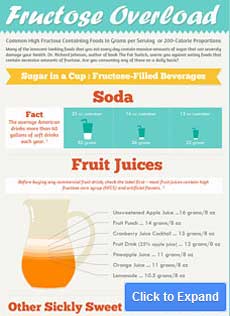Acupuncture may be the answer for a cheap and effective
treatment of sleep disorders. Obstructive sleep apnoea is the most common sleep
disorder affecting about 4% of men and 2% of women.
Obstructive sleep apnoea is a sleep- related breathing disorder in which there is repeated obstruction to the upper airway, while the person is sleeping.
Apnoea literally means "without breath". A treatment called nasal continuous positive airway pressure (CPAP) is considered the 'gold standard' treatment for the condition.
CPAP helps to hold the airway open and prevents collapse during sleep. Though it is nearly 100 per cent effective practice is difficult. Most of the patients do not tolerate treatment with CPAP. It was in this context that alternatives were sought. New research asserts that acupuncture is a good choice.
Acupuncture has been practised for thousands of years in China for the treatment of various diseases. It is a part of traditional Chinese medicine that treats patients by inserting and manipulating needles in the body.
The past century witnessed the advent of electro-acupuncture (EA) as an effective alternative of the widely used manual acupuncture (MA). In EA, a small electric current is passed between pairs of acupuncture needles. It was applied extensively in clinical and basic research. Studies showed that the results of EA and MA differ.
Prolonged and multiple sessions of acupuncture are usually required to treat obstructive sleep apnoea (OSA). The latest study concentrated on the immediate effect of a single session of OSA. It also weighed electro-acupuncture against manual acupuncture. The study took place at the Public Hospital of the Universidade Federal de Sao Paulo, Brazil, in the Division of Sleep Disorders of the Department of Psychobiology.
Forty patients were involved in the study and they were assigned into different groups randomly. All the participants, aged between 30-70 years, were ones with significant OSA confirmed by polysomnographic studies (commonly called 'sleep studies').
A single session of either MA or EA of 10 Hz was found to provide significant benefits for patients with obstructive sleep apnoea. A significant decrease in Apnoea-Hypopnoea Index, a measure of the severity of sleep apnoea was noted. The number of nocturnal respiratory events in patients was also found to have lowered.
Further research is hereby called upon since the positive results point to a cost effective means to improve the quality of life of multitudes suffering obstructive sleep apnoea.
Reference: Immediate effect of acupuncture on the sleep pattern of patients with obstructive sleep apnea; Anaflavia O Freire et al; Acupunture in Medicine.
Obstructive sleep apnoea is a sleep- related breathing disorder in which there is repeated obstruction to the upper airway, while the person is sleeping.
Apnoea literally means "without breath". A treatment called nasal continuous positive airway pressure (CPAP) is considered the 'gold standard' treatment for the condition.
CPAP helps to hold the airway open and prevents collapse during sleep. Though it is nearly 100 per cent effective practice is difficult. Most of the patients do not tolerate treatment with CPAP. It was in this context that alternatives were sought. New research asserts that acupuncture is a good choice.
Acupuncture has been practised for thousands of years in China for the treatment of various diseases. It is a part of traditional Chinese medicine that treats patients by inserting and manipulating needles in the body.
The past century witnessed the advent of electro-acupuncture (EA) as an effective alternative of the widely used manual acupuncture (MA). In EA, a small electric current is passed between pairs of acupuncture needles. It was applied extensively in clinical and basic research. Studies showed that the results of EA and MA differ.
Prolonged and multiple sessions of acupuncture are usually required to treat obstructive sleep apnoea (OSA). The latest study concentrated on the immediate effect of a single session of OSA. It also weighed electro-acupuncture against manual acupuncture. The study took place at the Public Hospital of the Universidade Federal de Sao Paulo, Brazil, in the Division of Sleep Disorders of the Department of Psychobiology.
Forty patients were involved in the study and they were assigned into different groups randomly. All the participants, aged between 30-70 years, were ones with significant OSA confirmed by polysomnographic studies (commonly called 'sleep studies').
A single session of either MA or EA of 10 Hz was found to provide significant benefits for patients with obstructive sleep apnoea. A significant decrease in Apnoea-Hypopnoea Index, a measure of the severity of sleep apnoea was noted. The number of nocturnal respiratory events in patients was also found to have lowered.
Further research is hereby called upon since the positive results point to a cost effective means to improve the quality of life of multitudes suffering obstructive sleep apnoea.
Reference: Immediate effect of acupuncture on the sleep pattern of patients with obstructive sleep apnea; Anaflavia O Freire et al; Acupunture in Medicine.


 Calcium phosphate stones
Calcium phosphate stones